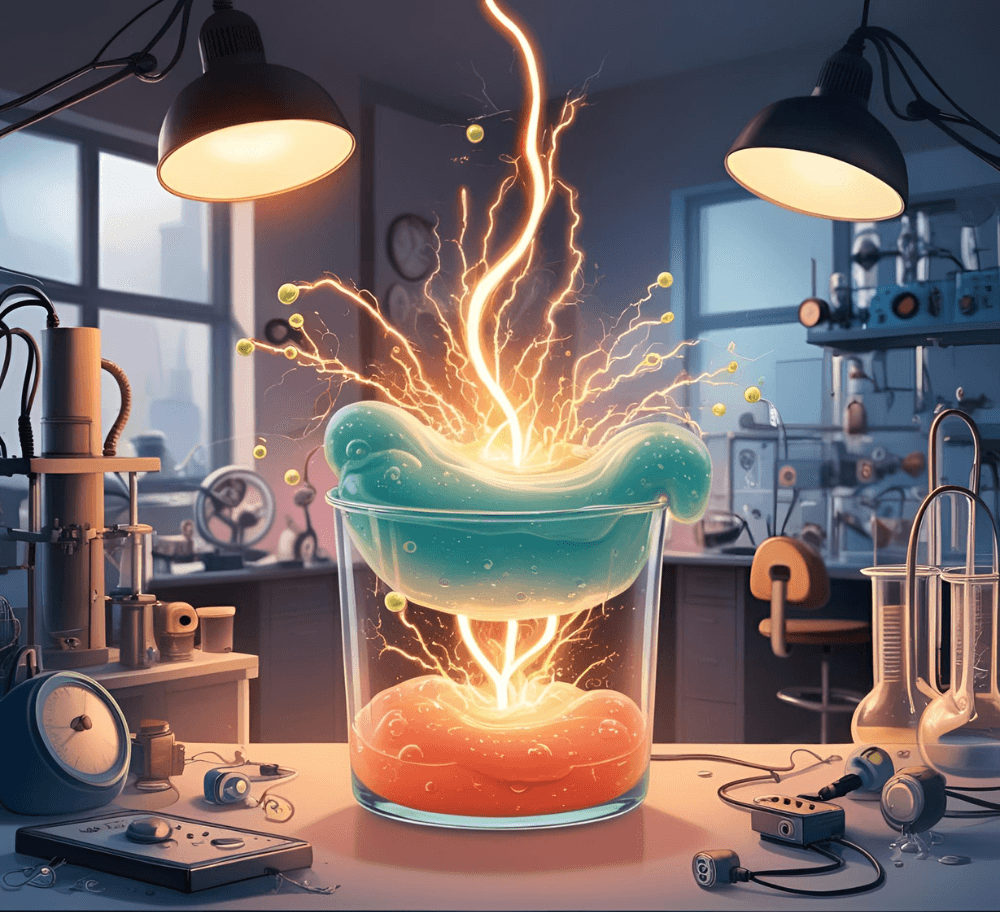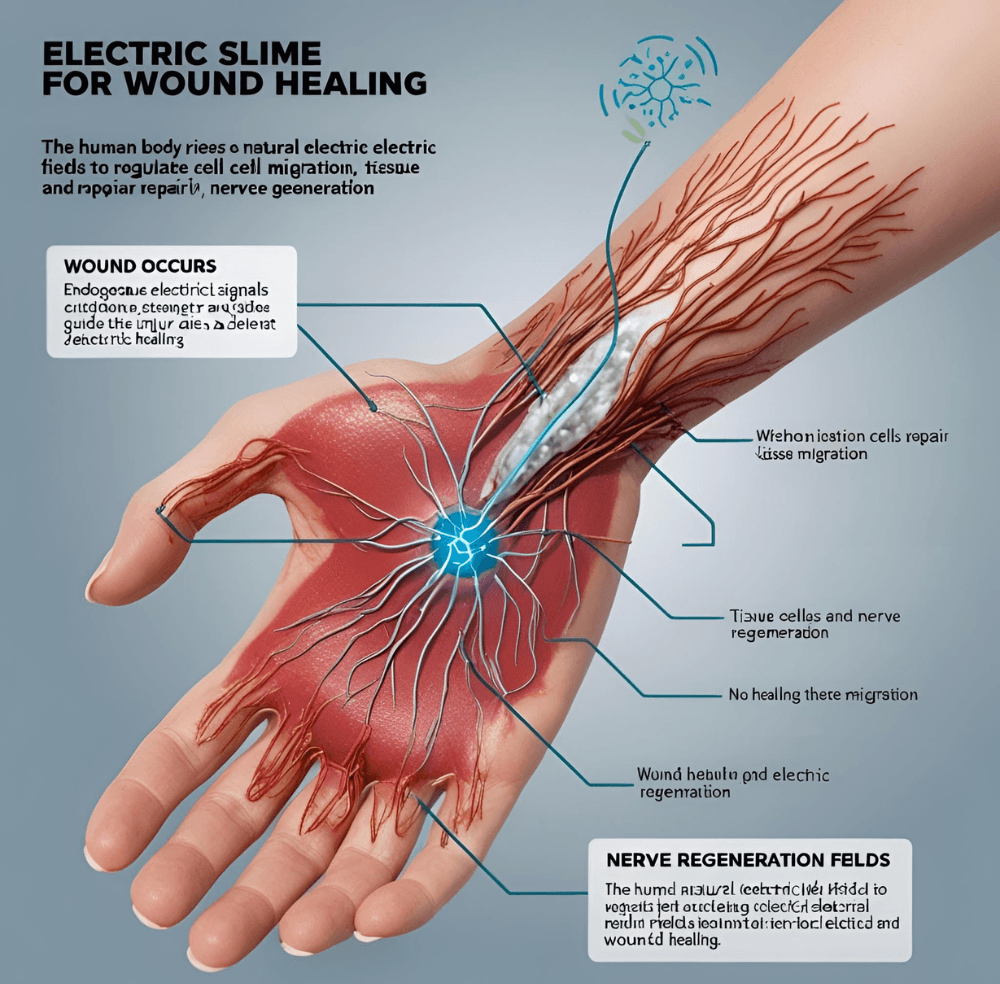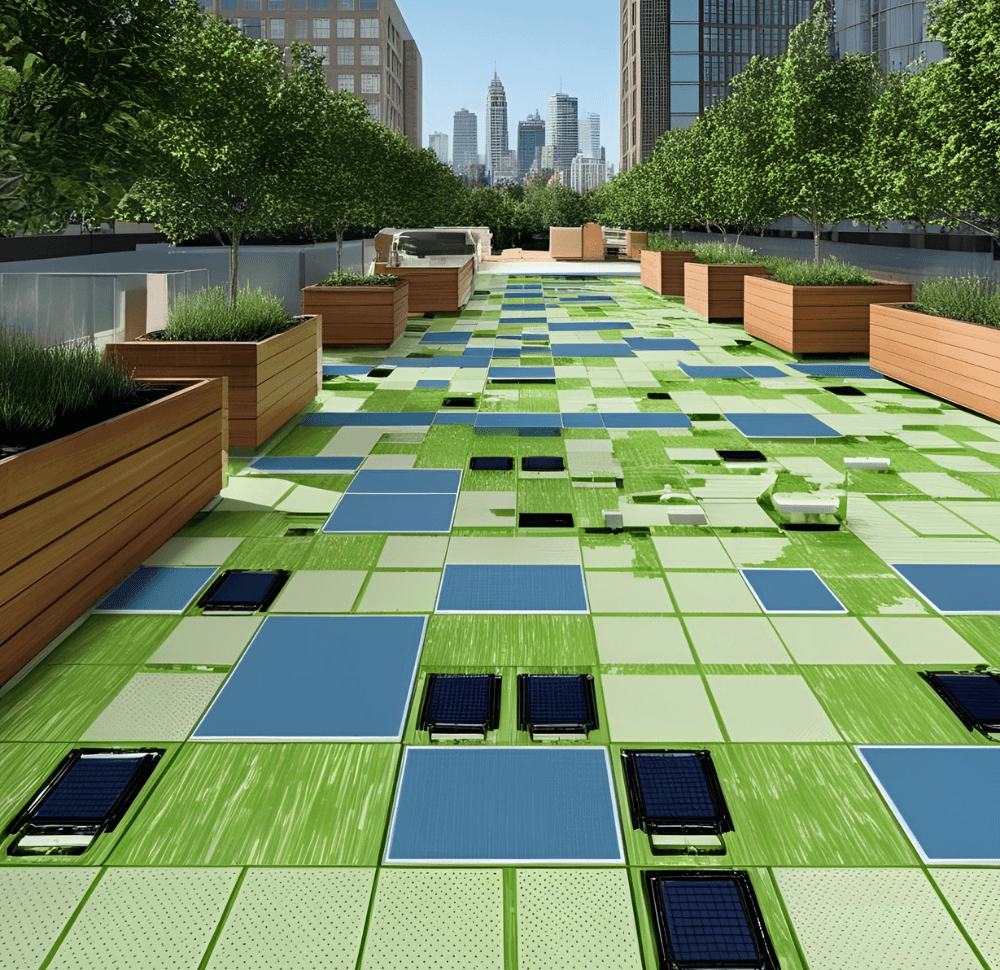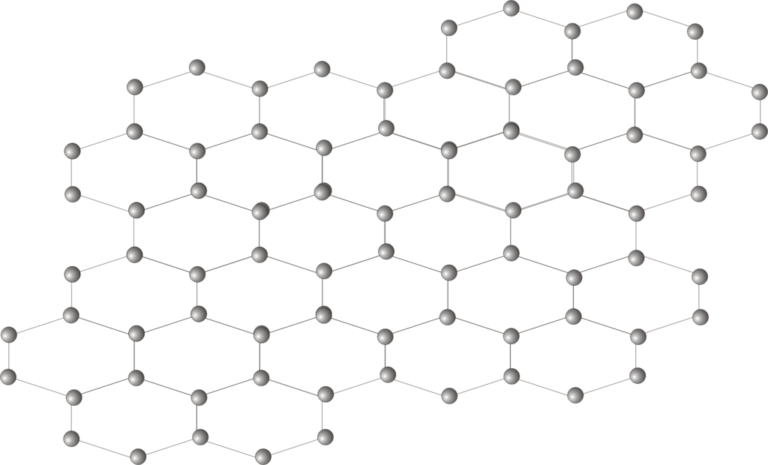Introduction: Electricity Generating Slime
Imagine a world where a simple, flexible, and gooey substance could power small devices, revolutionize medicine, and enhance robotics. What if the slime you played with as a child had the ability to generate electricity? Scientists are now harnessing electricity generating slime, a next-gen piezoelectric material, to create self-powered medical devices, wearable electronics, and sustainable energy solutions.
Traditional piezoelectric materials—such as quartz and ceramics—are often rigid, brittle, and environmentally unfriendly. However, the discovery of piezoelectric slime has changed the game. This biocompatible, eco-friendly material mimics the properties of natural energy-harvesting systems found in biological tissues and soft materials.
By utilizing a highly flexible molecular structure, electricity generating slime is paving the way for wearable energy harvesters, bioelectronics, and soft robotics. Scientists are now exploring its potential to replace conventional piezoelectric materials, offering a more sustainable alternative with applications in medicine, engineering, and renewable energy.

How Does Slime Generate Electricity? (The Science Behind the Magic)
The Piezoelectric Phenomenon Explained
The concept of piezoelectricity—the ability of certain materials to generate an electrical charge in response to mechanical stress—has been studied for over a century. This effect is commonly observed in crystals, bone structures, and some biological tissues, where applied pressure results in a charge displacement.
So, how does a seemingly soft and liquid-like slime exhibit piezoelectric properties?
Recent research has demonstrated that non-rigid materials can also generate piezoelectricity under the right conditions. Scientists have developed a soft, water-rich slime that exhibits an electric response when subjected to pressure, motion, or deformation.
The Composition of Electricity-Generating Slime
Piezoelectric slime consists of a carefully engineered molecular structure that allows it to respond to mechanical stress in a way similar to traditional piezoelectric crystals. The primary components of this slime include:
- Water (90%) – Acts as a primary medium, enabling flexibility and conductivity.
- Oleic Acid (from Olive Oil) – Helps form the molecular framework and enhances mechanical stability.
- Amino Acids & Protein Structures – These molecules self-assemble into sponge-like, hexagonal, or layered networks, crucial for charge displacement.
How Pressure Generates Voltage in Slime
When external mechanical force—such as squeezing, stretching, or compressing—is applied to the slime, its internal molecular structures reorganize, leading to an electric potential difference across the material.
- Compression or stretching causes deformation in its self-organized crystalline network.
- The rearrangement of molecules generates a dipole moment , inducing an electric charge.
- This charge can be captured and used for powering small electronics, similar to how traditional piezoelectric materials function.
This unique mechanism allows electricity-generating slime to function as a flexible, biocompatible power source for medical implants, soft robotics, and energy harvesting applications.
Medical Marvels: Self-Healing Slime and Beyond
Electric Slime for Wound Healing
The human body relies on natural electric fields to regulate cell migration, tissue repair, and nerve regeneration. When a wound occurs, endogenous electrical signals guide cells to the injured site, accelerating healing. Scientists have now developed self-healing slime, a biocompatible material that can amplify these electric fields, enhancing the body’s natural recovery processes.
How Does It Work?
- Piezoelectric slime generates low-voltage electrical pulses when subjected to movement or external pressure.
- These pulses stimulate fibroblasts (skin-repair cells) and keratinocytes, encouraging faster wound closure.
- It can be applied as a smart bandage that activates naturally with body motion.

Advantages Over Traditional Wound Care:
✅ Biocompatibility – Unlike synthetic bandages, self-healing slime is non-toxic and safe for prolonged skin contact.
✅ Enhanced Healing – It doesn’t just cover wounds; it actively speeds up recovery by boosting cell migration and tissue formation.
✅ Nerve Regeneration Potential – Studies suggest that piezoelectric stimulation could help regenerate damaged nerves, making this slime a promising material for neurological recovery and bioelectronic implants.
Targeted Drug Delivery
One of the most groundbreaking uses of electricity-generating slime is in smart drug delivery. By harnessing the electric field response of the slime, researchers have found ways to trigger precise medication release at targeted locations.
Key Benefits of Slime-Based Drug Delivery:
- Controlled Release – Electrical stimulation alters the slime’s molecular structure, allowing medication to be delivered at the right time and place.
- Infection Prevention – The slime reduces biofilm formation, a key factor in chronic infections caused by bacteria-resistant coatings.
- Real-World Testing: Lead researcher Erica Pensini has tested slime-infused salves for rock climbers, demonstrating its ability to accelerate skin healing while preventing infection risks from cuts and abrasions.
Energy-Harvesting Floors: Powering Cities One Step at a Time
Piezoelectric Sidewalks vs. Slime-Based Floors
With the rise of smart cities and sustainable energy solutions, researchers have explored ways to harvest kinetic energy from human movement. Traditional piezoelectric sidewalks—such as those installed in India’s energy-harvesting pavements—convert footsteps into usable electricity. However, these systems are rigid, expensive, and prone to wear over time.
Enter slime-based energy-harvesting floors:
Unlike conventional piezoelectric tiles, slime-based systems offer:
✅ Greater Flexibility – Slime adapts to various surfaces, making it suitable for irregular urban landscapes.
✅ Higher Scalability – Can be implemented in parks, malls, train stations, and even smart clothing.
✅ Eco-Friendly Design – Biodegradable and composed of non-toxic organic compounds, reducing e-waste.

Shoe Insoles for Gait Analysis
Another exciting application of piezoelectric slime is in wearable technology, particularly smart insoles designed for gait analysis. These slime-infused sensors track movement patterns to help with:
- Posture correction – Analyzing walking habits to reduce back and joint strain.
- Injury Prevention – Providing real-time feedback to athletes, alerting them to improper movement patterns.
- Medical Diagnostics – Assisting elderly patients or those with neuromuscular disorders in monitoring mobility and preventing falls.
Sustainability & Natural Materials
Why Natural Materials Matter
The quest for sustainable alternatives in piezoelectric technology is driven by the urgent need to reduce reliance on rare earth elements and minimize environmental impact.
Limitations of Traditional Piezoelectric Materials
Most conventional piezoelectric devices—found in sensors, transducers, and energy harvesters—use ceramic-based materials such as lead zirconate titanate (PZT) or synthetic polymers like polyvinylidene fluoride (PVDF). However, these materials present major sustainability concerns:
- Rare Earth Dependency: Ceramics and synthetic piezoelectrics rely on elements like neodymium, barium, and lead, which require intensive mining and generate toxic waste.
- High Carbon Footprint: The manufacturing process for traditional piezoelectric materials involves high-temperature sintering (~1,200°C), leading to significant CO₂ emissions.
- Toxicity & Waste Issues: Lead-based piezoelectrics pose long-term environmental hazards, requiring special disposal procedures due to their non-biodegradability.
Slime-Based Piezoelectric Materials: A Green Alternative
By leveraging biodegradable and non-toxic elements, slime-based piezoelectric materials offer a sustainable solution for energy harvesting and wearable electronics.
Key Advantages of Slime-Based Materials:
✅ Biodegradability – Unlike ceramics, slime-based materials break down naturally, reducing e-waste.
✅ Non-Toxic Composition – Composed of oleic acid, water, and organic hydrogels, making it safe for both humans and the environment.
✅ Energy-Efficient Production – No high-temperature sintering, leading to lower energy consumption during manufacturing.
✅ Lower Carbon Footprint – Life-cycle assessments show slime-based materials generate significantly less CO₂ emissions than PZT and PVDF-based alternatives.
Future of Natural Piezoelectric Materials
As research progresses, bio-inspired piezoelectric materials could revolutionize applications in:
- Wearable Tech & Smart Clothing: Slime-based nanogenerators could power low-energy devices through body motion.
- Eco-Friendly Infrastructure: Biodegradable piezoelectric coatings could be embedded in buildings and roads, generating power from wind and vibrations.
- Medical Sensors & Biocompatible Electronics: Natural piezoelectric films could be used for implantable medical devices, ensuring long-term safety inside the human body.
Future Prospects: From Synthetic Skin to Space Exploration
Robotics and Synthetic Skin
Soft robotics is one of the most exciting frontiers in bio-inspired engineering, and slime-based synthetic skin could play a transformative role in this field. Unlike traditional rigid exoskeletons, robots coated with slime-infused synthetic skin could achieve unparalleled dexterity and responsiveness—bridging the gap between machines and human-like interaction.
Applications in Robotics:
- Human-like touch perception: The slime can conduct tiny electrical pulses, allowing robots to detect pressure changes, read vital signs (e.g., pulse checks), and even recognize temperature fluctuations.
- Safe handling of fragile objects: Traditional robotic arms struggle with gripping delicate items (like glassware, soft fruits, or medical instruments). Slime-based coatings could enable adaptive grip control, reducing breakage.
- Biocompatible Prosthetics: Integrating slime-infused synthetic skin with neural interfaces could enhance the realism and responsiveness of prosthetic limbs—potentially restoring tactile sensations for amputees.
Scalability and Challenges
While slime-based innovations hold immense promise, certain engineering and material science challenges must be addressed before mass adoption.
Key Challenges:
- Energy Output Optimization – While slime-based materials can generate electricity, their current efficiency is lower than solid-state piezoelectric materials. Researchers are working on enhancing conductivity and fine-tuning molecular structures to improve output.
- Long-Term Durability – Moisture retention, environmental wear, and mechanical stress can degrade slime’s properties over time. Scientists are exploring self-repairing hydrogel formulations to prolong usability.
- Scalability for Commercial Use – Scaling production while maintaining cost-effectiveness and biocompatibility remains a major hurdle in biomedical and flexible electronics applications.
Speculative Angle: Could Slime-Coated Spacecraft Harness Vibrations for Energy?
Beyond Earth, slime-based electricity harvesting could redefine how spacecraft generate power in deep space. Traditional spacecraft rely on solar panels, but what if cosmic vibrations—from micrometeoroid impacts, solar wind, or mechanical resonance—could be converted into electricity?
Potential Space Applications:
- Self-Healing Shielding – A spacecraft coated in electricity-generating slime could absorb micro-impacts and self-repair, extending mission lifespans.
- Vibration Energy Harvesting – The perpetual motion of spacecraft in orbit generates subtle vibrations. A slime-based coating could transform these into a renewable energy source, reducing dependence on battery storage.
- Lunar and Martian Infrastructure – Slime coatings could be applied to Martian habitats or Moon bases to provide passive energy generation while shielding astronauts from radiation.
Conclusion: A Slime-Powered Future
Throughout history, scientific breakthroughs often emerge from unexpected materials, and self-healing slime is no exception. From medical marvels to energy-harvesting floors, from soft robotics to potential space applications, slime-based technology is pushing the boundaries of innovation.
The Transformative Potential of Slime:
✅ Healthcare: Smart wound dressings, nerve regeneration, and targeted drug delivery.
✅ Energy Harvesting: Piezoelectric sidewalks, wearable tech, and gait analysis insoles.
✅ Robotics & AI: Soft robotics, synthetic skin, and bio-inspired prosthetics.
✅ Space Exploration: Speculative slime-coated spacecraft and energy-harvesting lunar bases.
As research continues, this once sci-fi-inspired material could reshape multiple industries. Whether in medicine, sustainability, or even interstellar travel, slime-based innovations might soon power the next era of technology.
👉 Stay tuned as this sci-fi slime reshapes our world! 🚀
More Innovative Ways to Generate Electricity
While electricity-generating slime is a fascinating breakthrough, scientists are exploring various unconventional energy solutions. Here are four other cutting-edge technologies transforming renewable energy:
1. Harnessing Soil Electricity 🌱⚡
Did you know that soil microbes can generate electricity? Researchers are developing microbial fuel cells to tap into this natural process, offering a sustainable power source for remote areas. Learn more about harnessing soil electricity and its potential applications.
2. Piezoelectric Fabrics: Wearable Energy Harvesting 👕🔋
Imagine clothing that generates power from movement! Piezoelectric fabrics embed nanogenerators into textiles, allowing wearable devices to charge themselves. Discover how piezoelectric fabrics are paving the way for self-powered smart wear.
3. Energy Harvesting with Piezoelectric Roads 🚗⚡
What if roads could generate power from traffic? Piezoelectric roads use embedded sensors to convert vehicle vibrations into electricity, making highways and city streets smarter. Check out how energy harvesting with piezoelectric roads is revolutionizing infrastructure.
4. AuREUS Solar Panels: Next-Gen Solar Technology ☀️🔋
Traditional solar panels struggle in low-light conditions, but AuREUS solar panels solve this by capturing scattered UV light, even on cloudy days. Find out how AuREUS solar panels are making solar energy more efficient and accessible.
These innovative technologies demonstrate that energy can be harvested from the most unexpected sources—from slime and soil to fabrics and roads! 🌍⚡






